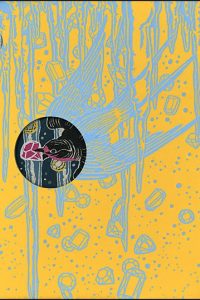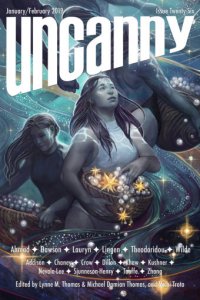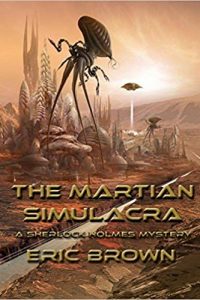Gary K. Wolfe reviews Nnedi Okorafor
The Book of Phoenix, Nnedi Okorafor (DAW 978-0-7564-1019-3, $24.95, 240pp, hc) May 2015.
 Several times in Nnedi Okorafor’s World Fantasy Award winning Who Fears Death, characters allude to ‘‘The Great Book’’, a legendary text that serves largely as a mythological origin story for her far-future Sudan, but which the reader recognizes might also be a corrupted version of an actual science fiction backstory explaining the devastated nature of her world, not unlike the ‘‘memorabilia’’ preserved by the monks in A Canticle for Leibowitz. The Book of Phoenix isn’t quite The Great Book – we learn how that comes about late in the novel – but its narrative is presented as the primary source for that book, an audio file preserved in a remote cave full of ancient computers (a cave we briefly visited in Who Fears Death) and discovered centuries later by an aging villager who can make little sense of it. And no wonder: what he’s stumbled across is a (for us, at least) near-future thriller involving radical genetic engineering, a vast and vile corporate-government conspiracy, and a cast of superpowered characters that have more in common with the X-Men than with the wan survivors of the future Sudan. As this might suggest, the novel is also quite a bit different in tone, structure, and pacing from Who Fears Death – but it’s no less angry, and a bit more given to spectacle.
Several times in Nnedi Okorafor’s World Fantasy Award winning Who Fears Death, characters allude to ‘‘The Great Book’’, a legendary text that serves largely as a mythological origin story for her far-future Sudan, but which the reader recognizes might also be a corrupted version of an actual science fiction backstory explaining the devastated nature of her world, not unlike the ‘‘memorabilia’’ preserved by the monks in A Canticle for Leibowitz. The Book of Phoenix isn’t quite The Great Book – we learn how that comes about late in the novel – but its narrative is presented as the primary source for that book, an audio file preserved in a remote cave full of ancient computers (a cave we briefly visited in Who Fears Death) and discovered centuries later by an aging villager who can make little sense of it. And no wonder: what he’s stumbled across is a (for us, at least) near-future thriller involving radical genetic engineering, a vast and vile corporate-government conspiracy, and a cast of superpowered characters that have more in common with the X-Men than with the wan survivors of the future Sudan. As this might suggest, the novel is also quite a bit different in tone, structure, and pacing from Who Fears Death – but it’s no less angry, and a bit more given to spectacle.
Nearly all of the story is narrated by Phoenix (sometimes called Phoenix Akore), a ‘‘speciMen’’ created through an experimental genetics program being carried out in Tower Seven, a sealed environment in a partly flooded Manhattan which is one of several such towers around the world. Tower Seven is distinguished by a giant tree called the Backbone, which began as a lobby planting but has grown to form the core of the entire building. All of the towers house projects by that black-ops organization called the Big Eye, and while some were established for worthy purposes such as mitigating climate change or curing AIDS, the overall project falls victim to corruption and greed, focusing on developing superweapons, a serum for immortality, regenerating organs, and even the groundwork for a posthuman race of supermen. Since many of the experimental subjects are Africans, there are inevitable echoes of the Tuskegee syphilis experiments or the genetic heritage of Henrietta Lacks (who is referred to in the novel). In Phoenix’s case, accelerated growth and super-intelligence have given her the composure, education (she can read a 500 page book in minutes, and has a 700,000-volume e-library at her disposal), and appearance of a 40-year-old woman, though she was born only three years earlier. But even she is unaware of some of the most crucial secrets about herself as the novel opens.
The precipitating crisis is the apparent suicide of Phoenix’s boyfriend Saeed, himself engineered to survive by consuming glass, dirt, sand, and metal, like a distant ancestor of Bacigalupi’s people of sand and slag. Distraught over Saeed’s death, and assisted by another experimental subject named Mmuo (who can walk through walls), Phoenix begins to plot her escape. This is when her hidden powers begin to emerge: she glows, and can raise her body temperature until it sears anyone who touches her – and, true to her name, she can incinerate herself and rise from the ashes. Her titanium-alloy bones give her Terminator-like strength and endurance. She can briefly ‘‘slip’’ back and forth in time. She can cause vegetation to grow rapidly and uncontrollably, and eventually – after destroying Tower Seven with the aid of the tree called the Backbone – she even sprouts wings and flies off to Ghana. On the way, she sets free a mysterious winged man, trapped in a crucifixion pose in the Tower, who later serves as a kind of adviser when he’s not being a Superman-style savior in Manhattan.
The bad guys track her down and blackmail her to return to the US, but this turns out not to be their best idea – since, as we’re rapidly learning, the central narrative movement in The Book of Phoenix is the radicalization of a superhero. Nearly at the exact center of the book, Mmuo takes over as narrator for a few pages and tells Phoenix his life story, including his involvement with a radical student group called WaZoBia, which set out to overthrow the Nigerian government over its willingness to amass oil wealth while its people remained in poverty. A symbol of this corruption was the spider-like killer robots devised to protect the pipelines (inspired, in a coy bit of self-reference, by a science fiction story which is clearly Okorafor’s own ‘‘Spider the Artist’’). Their plot was brutally suppressed (of course Big Eye is involved), but the story helps clarify what Phoenix comes increasingly to view as her mission against Big Eye, starting with what she believes to be its headquarters in the US Virgin Islands. The result turns out more apocalyptic than even Okorafor’s readers might expect (and almost incidentally serves as a critique of the wimpiness of the X-Men movies in confronting their own political implications), but it does help establish the background of the world which, centuries later, would provide the setting for Who Fears Death.
Apart from that historical link, The Book of Phoenix is not at all like Who Fears Death, and no one who reads either novel need be familiar with the other. For all the anger and passion that continues to fuel Okorafor’s work, there remains a certain joyful lightness of invention that dates all the way back to Zahrah the Windseeker (whose Great Greeny Jungle has never entirely faded from view in her work). She likes those intelligent spider robots, for example (which have their own role to play in this apocalypse), and she clearly enjoys inventing magical technologies like bulletproof shea butter. There is also a willingness to draw on a wider variety of sources evident here – The Book of Phoenix alludes not only to her own earlier work, but to Star Wars, Ngugi Thiong’o, Henrietta Lacks, and the whole comic-book world of single-use superheroes. In that passage narrated by Mmuo, he says of his own education, ‘‘I loved and understood the spiritual, yes, but I also loved the sciences. I loved nature’s structure, rules, logic, its playfulness, and the sheer scope of its creativity. Science has always been aligned with Ani.’’ He could be speaking for Okorafor, which would go a good way toward explaining her own exuberance in recombining various storytelling modes in her fiction. For all its grim corporate dystopianism and moments of tragedy and startling violence, The Book of Phoenix is actually a more playful and experimental novel than Who Fears Death, and in a weird and unsettling way, it’s a lot of fun.






